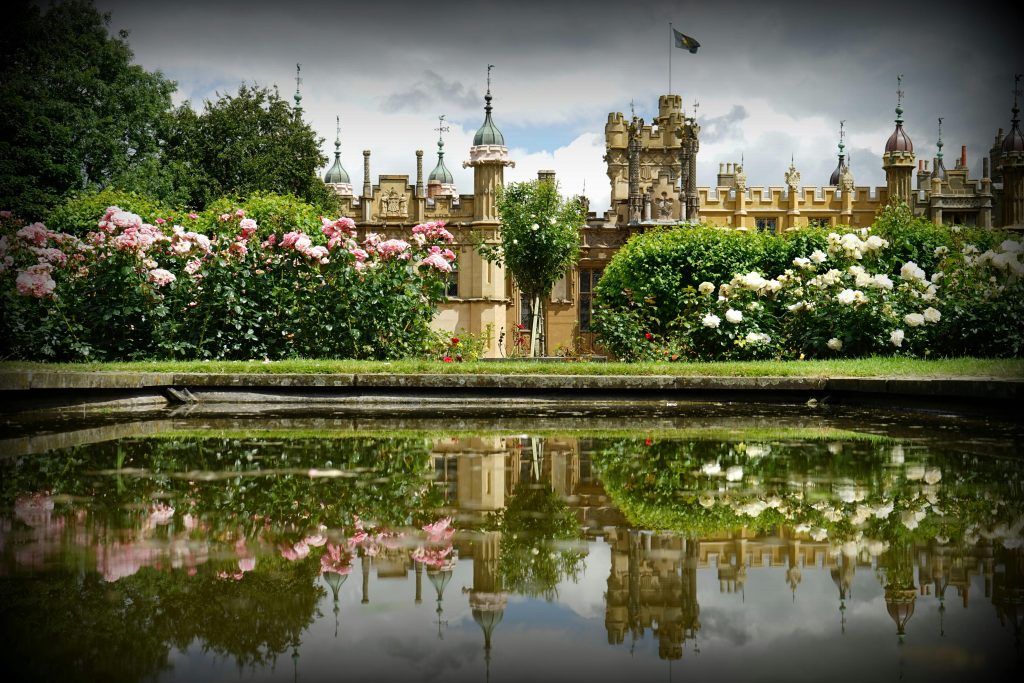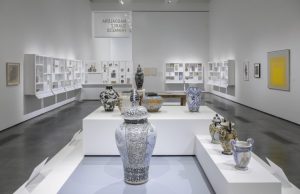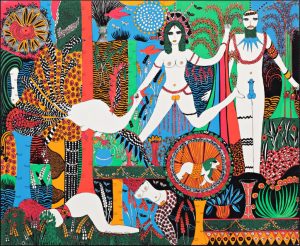
Introduction to Art Nouveau in Great Britain
Art Nouveau, known as the Modern Style in Great Britain, emerged as a revolutionary artistic movement in the late 19th and early 20th centuries. Characterized by its sinuous lines, organic forms, and intricate details, Art Nouveau sought to break away from the rigid academic traditions of the past, embracing a more natural and expressive aesthetic. In Great Britain, this movement found a vibrant expression across various disciplines, from architecture to decorative arts, leaving a lasting impact on the country’s cultural heritage.
British Art Nouveau was influenced by both national and international trends, resulting in a rich and diverse body of work. British artists and architects drew inspiration from nature, incorporating elements such as flowers, plants, and flowing lines into their creations. This article explores the key aspects of Art Nouveau in Great Britain, highlighting its architectural wonders, notable artists, and enduring legacy in the cultural landscape.
The Architectural Elegance of the Modern Style
Architecture was a central element in the development of Art Nouveau in Great Britain. The movement’s emphasis on organic forms and intricate details found remarkable expression in the works of prominent British architects. One of the most notable figures was Charles Rennie Mackintosh, whose designs for buildings such as the Glasgow School of Art exemplify the fluid lines and ornate decorations characteristic of the Modern Style. Mackintosh’s works are celebrated for their innovative use of materials and their harmonious integration of art and architecture.
Another significant architect was Arthur Heygate Mackmurdo, whose contributions to the movement were pivotal. Mackmurdo’s designs for buildings and interiors showcased his mastery of Art Nouveau principles. His buildings, with their elegant curves and floral motifs, reflect a deep appreciation for both natural forms and traditional British craftsmanship. These architectural achievements not only transformed the urban landscape of Great Britain but also set new standards for aesthetic and functional design.
The Influence of Glasgow and London
Glasgow and London were two key centers for the development of Art Nouveau in Great Britain. Glasgow, known for its dynamic artistic community and progressive spirit, became a hub for architects and designers who embraced the new style. The city’s vibrant cultural scene provided fertile ground for the movement to flourish, resulting in a plethora of innovative buildings and public spaces.
London, with its rich cultural heritage and forward-thinking attitude, also played a significant role in the Art Nouveau movement. The city hosted numerous exhibitions and events that showcased works by leading British and international artists. These events were instrumental in promoting the Modern Style and fostering a spirit of experimentation and collaboration among artists and designers. The influence of Glasgow and London extended beyond architecture to encompass various forms of visual art and design, contributing to a rich tapestry of artistic output.
Prominent Artists of British Art Nouveau
Art Nouveau in Great Britain was not limited to architecture; it also found expression in the works of numerous painters, sculptors, and graphic artists. One of the most renowned artists of the movement was Aubrey Beardsley, whose illustrations captured the essence of the Modern Style’s emphasis on beauty and nature. Beardsley’s works, characterized by their intricate details and bold contrasts, reflect a deep appreciation for both traditional British art and modernist principles.
Another influential figure was Walter Crane, a painter and illustrator whose contributions to Art Nouveau were significant. Crane’s designs for books, posters, and murals, characterized by their elegant lines and harmonious compositions, helped define the visual language of the Modern Style. His work for publications such as “The Studio” was particularly influential in shaping the style and direction of British Art Nouveau.
Decorative Arts and Design
The decorative arts played a crucial role in the Art Nouveau movement in Great Britain, with artisans producing stunning furniture, glassware, and ceramics. The workshops of the Arts and Crafts movement, led by figures such as William Morris, became renowned for their innovative designs and high-quality craftsmanship. The furniture produced during this period, characterized by its curvilinear forms and intricate inlays, exemplified the movement’s commitment to beauty and functionality.
Glassware and ceramics also saw significant developments under the influence of the Modern Style. Artists such as Christopher Dresser and Charles Rennie Mackintosh created pieces that featured flowing lines and organic motifs. These items not only enhanced the aesthetic appeal of everyday objects but also brought the spirit of Art Nouveau into the homes of ordinary Britons. The emphasis on craftsmanship and artistic integrity in these decorative arts continues to be celebrated today.
The Role of Graphic Arts and Posters
Graphic arts and posters were vital mediums for the dissemination of Art Nouveau aesthetics in Great Britain. Artists like Aubrey Beardsley and Charles Ricketts revolutionized poster design with their innovative approaches. Beardsley’s posters, often depicting dynamic scenes and elegant figures, captured the movement’s fascination with modernity and movement. His use of bold contrasts and dramatic compositions made his work instantly recognizable and influential.
Charles Ricketts, known for his striking illustrations and posters, also played a significant role in popularizing the Modern Style through his work for various commercial brands and cultural events. Ricketts’s designs, characterized by their elegance and sophistication, helped establish the visual identity of British Art Nouveau. The widespread visibility of these posters contributed to the broader public’s appreciation and recognition of the movement.
The Impact on Everyday Life
Art Nouveau’s influence permeated everyday life in Great Britain, extending beyond the realms of high art and architecture. The movement’s principles were applied to a wide range of everyday objects, from household items to fashion. British designers created textiles, wallpaper, and ceramics that featured the characteristic flowing lines and natural motifs of the Modern Style. These items brought the beauty and elegance of the movement into the homes of ordinary people.
In the realm of fashion, designers such as Liberty & Co. embraced the fluid forms and organic patterns of Art Nouveau. The company’s innovative designs broke away from the rigid silhouettes of the past, offering women more freedom of movement and expression. The influence of Art Nouveau on fashion not only transformed clothing styles but also reflected broader cultural shifts towards modernity and individuality.
Conclusion
Art Nouveau in Great Britain, known as the Modern Style, represents a period of remarkable artistic innovation and expression. From the architectural masterpieces of Charles Rennie Mackintosh and Arthur Heygate Mackmurdo to the exquisite glasswork of Christopher Dresser and the iconic posters of Aubrey Beardsley, the movement left an enduring legacy in the cultural landscape of Great Britain. The principles of Art Nouveau, with their focus on beauty, nature, and innovation, continue to inspire artists and designers today, serving as a testament to the timeless appeal of this extraordinary period in art history.



